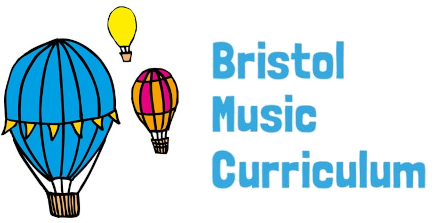Early Learning Goal: To create a performance we can share. Starter activity: Class activity responding to the reflections of the creepy crawly masks in a mirror. Children to move like their insect to the ‘Creepy Crawly Calypso’, responding to words like; scuttle, creep, march, flap, wriggle, prance. Main activity: Class performance of the texture piece in three lines […]
Tag: performance
Year 5, Unit 2: Trains – Lesson 6
Key Learning Objectives: To read and perform an extended rhythmic composition using traditional notation. I can maintain a rhythmic line and a rhythmic ostinato in an ensemble. To perform with sensitivity and with musicality. Starter activity: Rehearse each two bar rhythm using the backing tracks, focusing on correcting the reading and maintaining the pulse. Main activity: Performance […]
Year 6, Unit 2: Samba – Lesson 6
Key Learning Objectives: To maintain a musical line within a Samba structure, recognising and responding appropriately to calls. To refine and improve a performance. Starter activity: Class exercise using a metronome set to 120 bmp. Divide the class into two groups, one group to clap on beat one of three and the other to clap […]
Year 6, Unit 1: Water – Lesson 6
Key Learning Objective: To perform and celebrate compositions. Additional Learning Objective: To evaluate aspects of final work in relation to musical learning over the term. Starter activity: Listening and response exercise based on Ravel’s ‘Jeux d’Eau’, discuss how the composer give an impression of water. Main activity: In groups, briefly rehearse the ternary form compositions, using graphic scores […]
Year 6, Unit 1: Water – Lesson 2
Key Learning Objective: To add and maintain a second part to the sea shanty in harmony. Additional Learning Objective: To explore call and response structure further. Starter activity: Listening and response exercise based on the Overture ‘The Hebrides (Fingal’s Cave)’ by Mendelssohn. Focus on how the rolling melodies are reminiscent of the seascape the inspired the […]
Year 5, Unit 2: Trains – Lesson 5
Key Learning Objectives: To compose/notate a rhythm to illustrate an aspect of a train journey. To read and perform a number of notated rhythms. To maintain a rhythmic line and a rhythmic ostinato in an ensemble. Starter activity: Choose one of the pulse / rhythm games from the rhythm activity sheet. Main activities: Activity one: Revise […]
Year 5, Unit 2: Trains – Lesson 3
Key Learning Objectives: To explore more complex rhythms and to create an ostinato. To notate a rhythmic ostinato. To add lyrics to match the ostinato rhythm. Starter activity: Choose one of the activities from the rhythm starter bank. Main activities: Introduce the concept of a tone poem through watching Honnnger’s ‘Pacific 231.’ Pupils to write down words […]
Year 4, Unit 1: Water – Lesson 6
Key Learning Objective: To maintain an independent line within a two part song. Additional Learning Objective: To sing in tune with expression and perform rhythmically simple parts that use a limited range of notes. Starter activity: Listen to a number of capstan and hauling sea shanties, asking the children to identify the main features of […]
Year 4, Unit 1: Water – Lesson 5
Key Learning Objective: To interpret symbols as musical sounds. Additional Learning Objective: To select instruments and explore the timbre of the instruments in order to represent aspects of a storm. Starter activity: Watch the BBC Ten Pieces film for Benjamin Britten’s ‘The Storm’ from the opera ‘Peter Grimes’. Explain that the class will be using it […]
Year 4, Unit 1: Water – Lesson 4
Key Learning Objective: To interpret symbols as musical sounds. Additional Learning Objective: To select instruments and explore the timbre of the instruments in order to represent aspects of a storm. Starter activity: Watch the BBC Ten Pieces film for Benjamin Britten’s ‘The Storm’ from the opera ‘Peter Grimes’. Explain that the class will be using it […]
